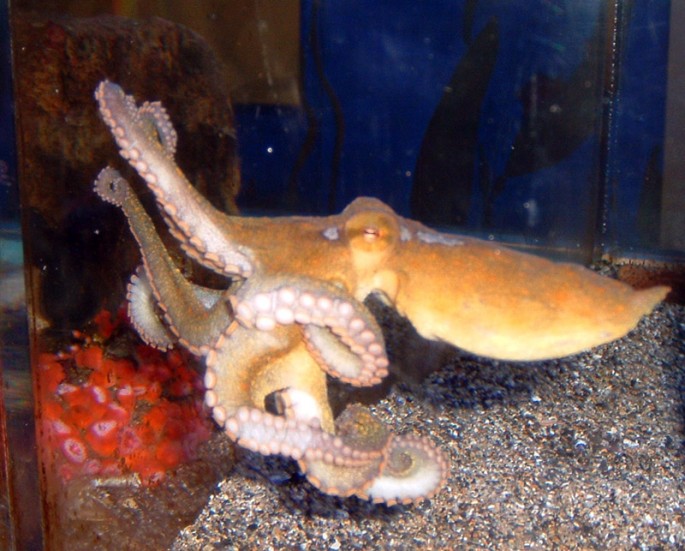Scientists now reveal the secrets of one of the planet's most mysterious underwater creatures, the octopus, which is considered to be one of the most intelligent invertebrates out there with its alien like appearance, bizarre tentacles moving with finesse and including a larger brain than most sea creatures.
Researchers have mapped out the first ever complete genome sequence of the octopus which belongs to the family of cephalopods, a class of mollusks where other members include squid, cuttlefish and nautiluses.
According to Caroline Albertin from the University of Chicago, octopuses and other cephalopods are truly remarkable animals as they can apply camouflage with a blink of an eye using different changing skin colors and textures according to their environment. Their eight arms are lined with suckers for grasping and manipulating and even tasting objects. Their eyes also function like cameras that work with their complex brains as they are also active predators.
Scientists sequenced the genome of the Octopus bimaculoides or the California two-spot octopus, which is a grey brown species with two iridescent blue spots located on the sides of its head that thrives in the Southern California coastal region.
Surprisingly, the octopus' genome was massive, almost the size of the human genome and more complex than other invertebrates like snails and oysters. Scientists found out that there are 3,500 genes that are totally unique to the octopus from its 33,000 genes, that are found active in its brain, suckers and retina including its camouflage capabilities.
Apparently, octopus genomes are arranged in a different manner compared to other invertebrates where they feature another expansion in the family of genes that control the nerve cell system that was only thought to exist and expand in vertebrates.
Some unique octopus characteristics involve ripping their prey apart since they are carnivorous creatures with their hard beak as they emit venom during a hunt. They can also regenerate lost limbs and squirt dark ink to escape from other predators.
The cephalopods originate from an ancient lineage, spanning more than 500 million years ago where the first octopus species appeared 270 million years ago wih 300 species today. This study is published in the journal Nature.



























